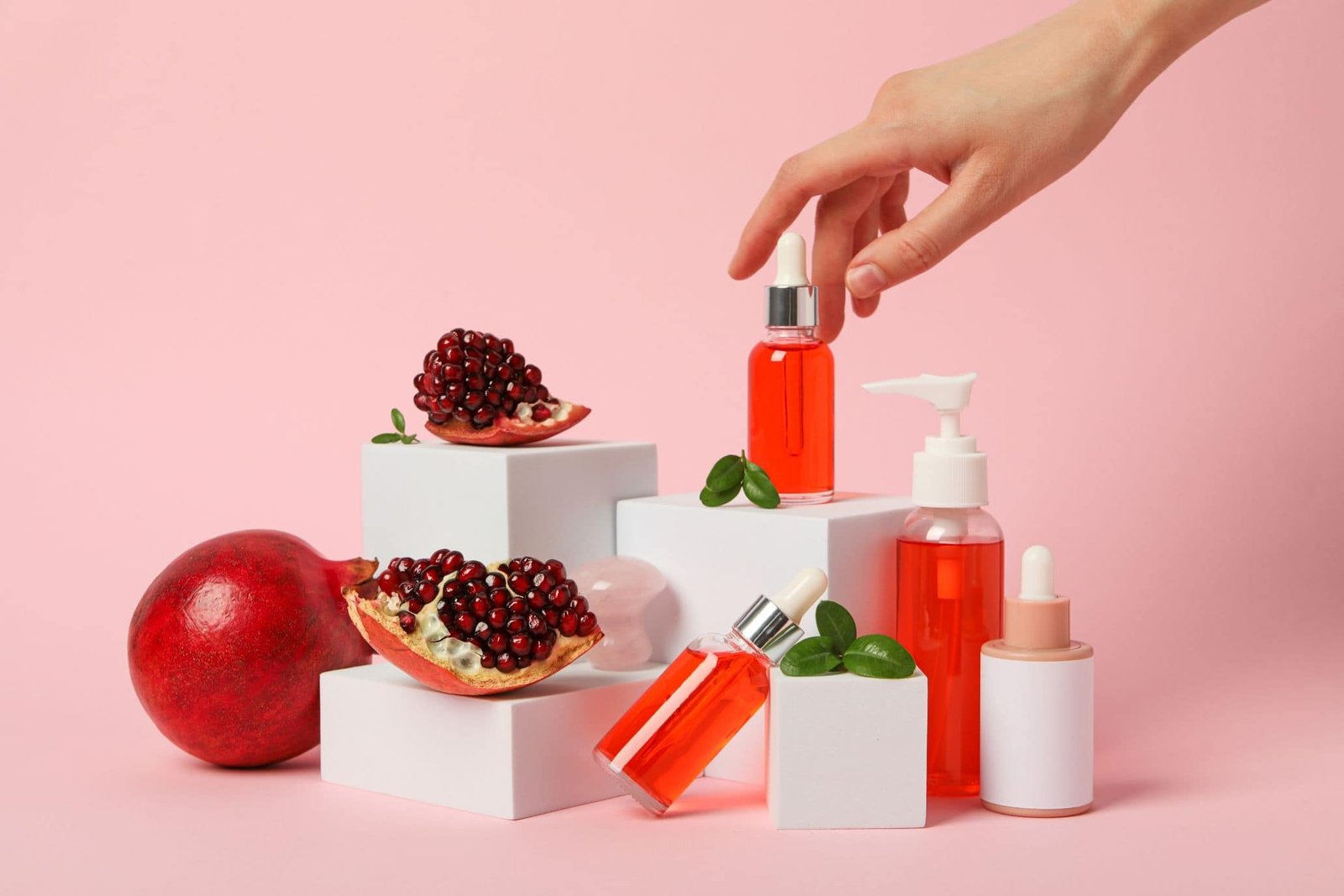With visuals leading the way in marketing, great product photography has never been more crucial than it is now.
Props for product photography is an art for 2026 that helps set a brand apart and make its mark.
Whether it is luxury items, handicrafts, or even the most ordinary things, props used properly add depth, a story, and color to your shots, making the ordinary pop in appealing ways with your target audience.
Further, it has guided one on how to shoot stunning and professional-looking images that will give a long-lasting effect.
This article aims to showcase the latest trends, essential tips for shooting, and strategic ways to incorporate props for product photography.
The Importance of Props for Product Photography
Adobe says the right Props for product photography play a major role. They define the atmosphere, carry the storytelling, and enhance it. Props are picture-like pointers stuck into your offer or marketing communication.
Why do you need props for product photography?
- Working with dimension in shots, the right accessories will, therefore, help in shooting multi-dimensionally, and this helps in adding a flow of depth, making it easier for the eye to focus on the product. The props make the place live most of the time, and in place of one plain flat shot of the product, they can create several aspects of depth in your shot.
- Setting the scene, on the other hand, refers to props that create a location in which the prop is to be used or in which the presentation is to take place. In this regard, they talked about how a hot cup of coffee would just go so well with a popcorn throw blanket. It’s just about focusing on those added materials that are required by the target audience in question.
- Better Communication: A product could depict one particular concept, and props sell the concept within which the specific idea has been designed. Creatively used props for product photography purposes or as a spatial system, props assist in the communication of brand images, emotions, and experiences toward the product brand.
- Increased Engagement: Well-chosen images that look good and are well-themed and composed are just bound to attract some prospective clients. The design of images and stories has always tamed people’s attention. Also, it explains the use of props for product photography.
Choosing the 6 Creative Props for Product Photography
The use of relevant props is one of the most important procedures in product photography. As you already know, each product, brand, and potential customer will determine the types of props used.
Below are the best props for product photography that will enable you to take dynamic and interesting pictures of the product:
1. Sourcing Blocks and Risers
Styling blocks and risers are just basic structures of various kinds that could be used to add height, depth, and even dimension in product photography.
These kinds of blocks work particularly well for showing those types of objects-small handbags, makeup, and electronics-which otherwise may not be seen very well.
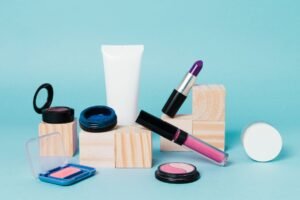
Because the product is not on a flat surface but on an upstand, the product does not appear flat against the backdrops, making the overall design more interesting.
It looks as if the product is coming out of the background into the view. They come in different designs, sizes, and make-ups of the materials used, for example, acrylic, wood, and concrete.
Also, they may remain at par with the rest of the furniture. Blocks are good to go when it comes to regular product photos.
However, they can accommodate the occupied piece of the frame without adding too much chaos to the picture.
2. Fabrics and Textiles
These shining cloths and carpets do come out, which is a beautiful advantage, but visualizing the image is rather average.
A typical example is if a builder needs to take a photograph of a bottle of perfume. It would be more appropriate to place the soft material, such as silk cloth, behind the bottle image.
Linen and textures should be in tandem with the kind of message you want to bring forth.
For instance, the green brand would probably even use jute because that would say more than organic cotton to their customer. Also, velvet and silk will be best for the brand.

3. Mirror as props for product photography
Whether the requirement is for a full-cover photo shoot or just an editorial one, a mirror makes quite an appearance.
Because it is a pretty useful tool that can serve more than one purpose in one given photo session. Like, it ranges from the “beautiful” pictorial light to the utterly reliable picture of the product.
Curiously enough, the phenomenon of the mirror product is sometimes so eager to give mowing reflections of the product, constituting the worst possible angle of every flick.
These include revealing the view much outside of the product by reducing clutter through the blockage of some peripheral light.
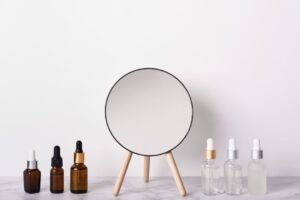
4. Trays
They arrange the products and keep them safe and neatly enclosed. Trays are most useful when the photographer is dealing with lifestyle items such as skincare products, cosmetics, and kitchenware.
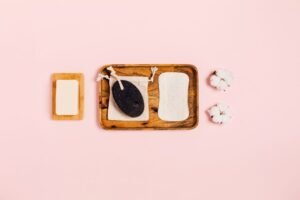
The arrangement of the products in the tray will enable such photographs to be brought in order, helping with the aesthetics.
It would also be required to decide on trays that complement your product and the image of the company.
Thus, whereas a wooden tray would go along with handmade goods, in the case of modern upscale goods, the sleek and shiny metal tray makes sense.
5. Natural Elements
It is always advisable to try to use some environmental elements while doing props for product photography, for such pictures tend to be more inviting and appealing, if not more in time than the other kinds.

They can help give organic and nature-based feelings to the images, whether it is flowers, plants, stones, or even wood. This does pretty well in the case of beauty and wellness or eco-friendly brands.
Product augmentation would probably include the artificial floral arrangements used in packaging, masks, heat pads, or other blurbs used there.
This is where my bias towards natural element inclusions in beauty scene shots seems to trend, perhaps most significantly.
Bringing in natural elements should, however, not only be about how the object would look more attractive.
It has also got to do with how the emerging clientele propagating going green and consuming eco-friendly products is getting increasingly aggressive.
6. Mannequins
Fashion photography is best represented on a stand or mannequins as props for product photography.
Because they show the contour of the garment and other details which enable the would-be buyer to imagine themselves in such attire.
The mannequins can also be differentiated into standing and torso, head types, and can even wear jewelry; they can be positioned with the clothes about to be shown.
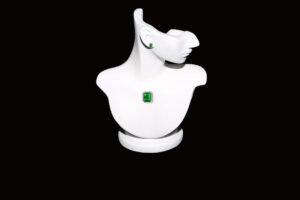
It is also going to save you lots of time when you shoot on the mannequin, and it works besides, there won’t be a need for changing different sets of clothes to be shot in one session.
The heads of models can likewise be animated, with fashions intended for editorials, whether dramatically high-fashion-styled or plain and everyday get-ups.
How to Use the Best Props for Product Photography
The next challenge, after selecting the props, is to master how to use them creatively in photo shoots so that they enhance and do not overpower the product.
Here is a guide on how to use props for product photography.
1. Know your Product story
From the start of the shoot itself, this explanatory or persuasive narrative must begin with a cinematic living for the tale you wish to create.
Or would you like to emphasize a product in its stark utility features or the grand imagery?
Here, there arises a need to tell stories behind the product and its purpose regarding the decorative elements and styling to be applied in the shooting.
Let me elaborate on this with the help of an example for complete comprehension. Keeping in mind the nature of a laconic and modern brand, it will be enough to include only simple props like acrylic risers or geometrical shapes.
However, with an earthy green brand, all raw elements with organic shapes are bound to better epitomize the values of a brand.
2. Prepare a Mood Board
There are situations when mood boards work wonders. As an example, a mood board for a photo shoot of a product is helpful, even more so.
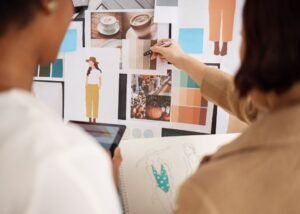
You can start to visualize the shooting method, so long as you have started gathering pictures, colors, surfaces, and even ideas.
This stage will help the sourcing of materials that are likely to be compatible with the product and intended image or brand.
For searching photo props ideas and sketches that will be required for shooting, Pinterest or Milanote might come in handy.
Props are the really important parts of a certain look, and that is why you are allowed to browse that kind of look to understand what kind of props work well with what looks.
3. Create a Shot List
First of all, a shot listing should be done before the start of the session. It means all the elements that are to be captured in the photograph.
All the things, including angles and layouts, that you intend to photograph.
Proper and thorough preparation of the shot list allows you to get the most out of the session and also minimizes the chances that you will miss capturing an important image.
It would be like taking an inventory of the stages by how you plan to utilize props in an enticing way to cut on time wastage.
It explains the importance of the shot list, which could be a headshot, a tight shot with foils, or a lifestyle shot they need to plan and have on the list.
4. Buy your Prop
Once you have established how you are going to go about the shoot, the next thing is getting the props.

Acquisition of some of the props is made easier, with some able to be found around the house/studio, while some need to be purchased or rented.
Check that these props match the product and its brand to prevent abuse in the design, since it is very easy to overuse props in the design.
With props for masks now available, come restrictions and masks. More masking is recommended, just for the framing of the props.
All the props that will be used complement the product, and not the product itself, which ought to be central in the photo composition.
Convey your message and apply the skills that will reinforce the key elements of the product.
5. Add Extra Props for Product Photography
The positioning of the product in relation to other products is important to note, including the product’s incorporation. You can do this and that composition and observe which of them looks appropriate for your product.

Now, let me suggest how one can draw the attention of the audience even closer by referring to one of the most successful image compositions, the rule of thirds.
It is an ancient technique where, for an image composition strategy, one divides the frame into thirds both vertically and horizontally.
It includes an image where an object is placed either along or across these imaginary lines or at their intersection, where a grid is put.
Later on, props can be used, which will serve dual purposes as far as balancing the different elements and advertising the product is concerned.
Hire Professional Editors for Perfection
Once you are done with clicking the images containing your product, it is time to step into the post-production phase.
The presence of some props in the frame helps to bring out attractive pictures to an extent, but most of the time, the picture needs to be polished through some measure of retouching.
These basic services are provided by editors who know exactly how to enhance the pictures to make an individual’s designs stand out from all the troubles.
A photo restoration service fits what was said previously, that all of the above can be sustained.
Photo editing removes the distractions from view, while imaging enhancements, retouching, and colorizing prepare them for print and web distribution.
If you need any help with product image editing services, reach out to us.
Final Words:
Props can make product photos look better and more interesting. They help show how a product is used in real life.
Good props add style without taking attention away from the product. Simple items like fabric, wood, or everyday objects work well. Always choose props that match your brand and product.
Keep the focus clear and clean. When used the right way, props help your photos stand out and attract more people.


